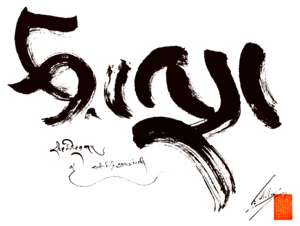Difference between revisions of "Peter Alan Roberts: Buddha-Nature in the Mahāparinirvāṇasūtra"
| Line 1: | Line 1: | ||
{{EventPage | {{EventPage | ||
|pagename=Peter Alan Roberts: Buddha-Nature in the Mahāparinirvāṇasūtra | |pagename=Peter Alan Roberts: Buddha-Nature in the Mahāparinirvāṇasūtra | ||
| + | |InterviewPage=Media/Buddha-Nature in the Mahāparinirvāṇasūtra by Peter Alan Roberts | ||
|headerImage=Roberts Peter.jpg | |headerImage=Roberts Peter.jpg | ||
|eventTitle=Peter Alan Roberts | |eventTitle=Peter Alan Roberts | ||
Revision as of 17:30, 3 September 2024
| Join us on Zoom by signing up here | Sign Up Here for access to the event via Zoom. Space is limited! |
|---|---|
| Join us on Facebook without signing up! | Join us live on Facebook. Space is NOT limited. |
Description & Participants
Buddha-Nature in the Mahāparinirvāṇasūtra
31 August 2024 · 11:00 AM Eastern Standard Time
Join us next week for another conversation on Buddha-Nature! Saturday, August 31st. An early foundational text for buddha-nature theory, the Mahāparinirvāṇasūtra is an influential teaching in many Buddhist traditions in China and Tibet. There is some controversy surrounding its teaching and this discussion will illuminate some of the more interesting aspects of the sutra. Set around the time of Buddha's passing or Mahāparinirvāṇa, the sūtra contains teachings on buddha-nature equating it with the dharmakāya—that is, the complete enlightenment of a buddha. It also asserts that all sentient beings possess this nature as the buddhadhātu, or buddha-element, which thus acts as a cause, seed, or potential for all beings to attain enlightenment. Furthermore, the sūtra includes some salient features related to this concept, such as the single vehicle and the notion that the dharmakāya is endowed with the four pāramitās of permanence, bliss, purity, and a self.
Peter Alan Roberts was born in Wales and lives in Hollywood, California. He earned a BA in Sanskrit and Pali and a DPhil in Tibetan Studies from Oxford University (Harris-Manchester College). For more than thirty years he has been working as an interpreter for lamas and as a translator of Tibetan texts. He specializes in the literature of the Kagyü and Nyingma traditions with a focus on tantric practices, and he is the author of The Biographies of Rechungpa and Mahāmudrā and Related Instructions, along with many other translations, especially for the 84000 Project. See The Stem Array, a translation of the Gandavyuha from the Tibetan, Sūtra of the Sublime Golden Light - a translation of the Suvarṇaprabhāsottamasūtra, and others online at 84000.co.
Conversations on Buddha-Nature
Recommended content
The Mahāparinirvāṇasūtra is one of the main scriptural sources for buddha-nature in China and Tibet. Set around the time of Buddha's passing or Mahāparinirvāṇa, the sūtra contains teachings on buddha-nature equating it with the dharmakāya—that is, the complete enlightenment of a buddha. It also asserts that all sentient beings possess this nature as the buddhadhātu, or buddha-element, which thus acts as a cause, seed, or potential for all beings to attain enlightenment. Furthermore, the sūtra includes some salient features related to this concept, such as the single vehicle and the notion that the dharmakāya is endowed with the four pāramitās of permanence, bliss, purity, and a self.

